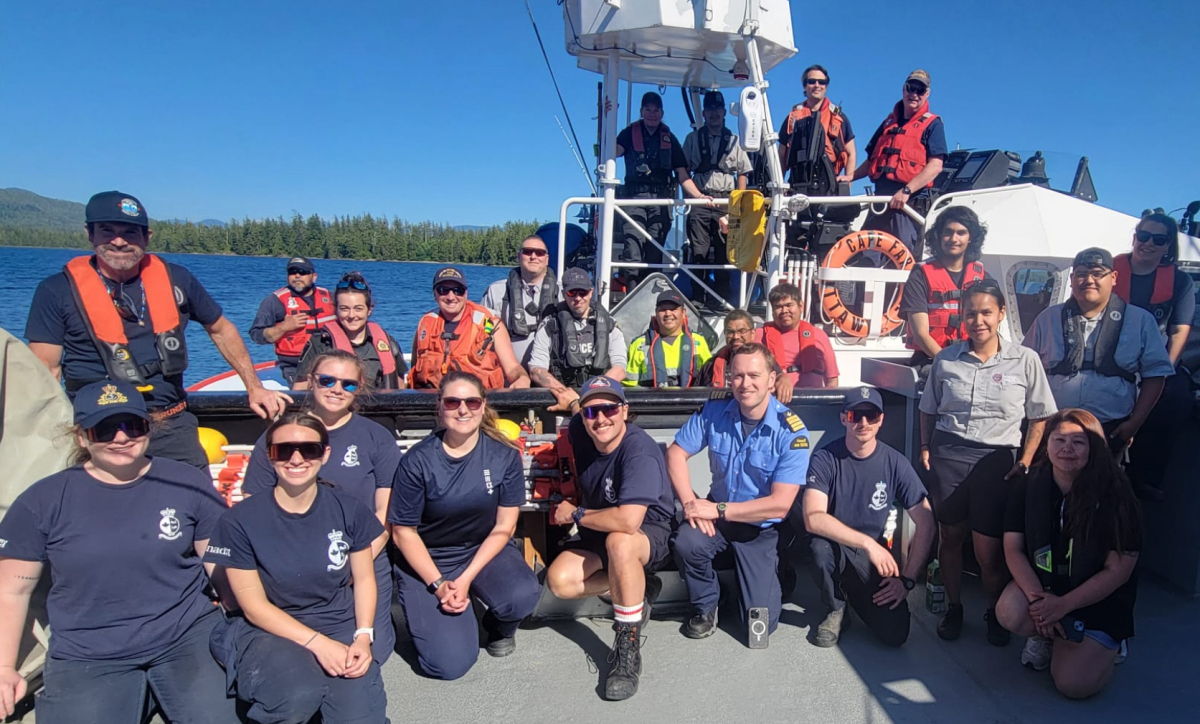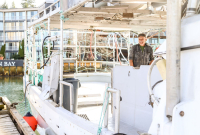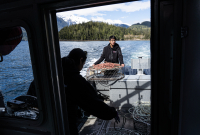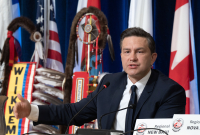Support strong Canadian climate journalism for 2025
When the Nathan E. Stewart tugboat ran aground off the coast of Bella Bella, spilling over 100,000 litres of fuel into surrounding waters in 2016, members of the Heiltsuk Nation were the first on scene.
The volunteers were there to support emergency operations — but were not fully included in the process, says Dawn Wilson, CEO of the Coastal National Coast Guard Auxiliary (CN-CGA).
It was a missed opportunity on many levels, she explains.
“When you have multiple stakeholders working together, and nobody knows what the left or right hand is doing, they're either doubling up on the work, making the work harder, or creating more damage than good between those relationships,” Wilson says.
Since the incident, Indigenous-led auxiliaries have been included more actively in responses. In 2017, marine search-and-rescue work that Indigenous communities provided long before the establishment of the Canadian Coast Guard (CCG), was formalized by the federal government to give coastal First Nations vessels, equipment and training to support their work.
Born out of funding from the federal government’s $1.5 billion Oceans Protection Plan, the Canadian Coast Guard established a team of dedicated staff to work with First Nations, says Geoff Carrow, deputy superintendent of Search and Rescue (SAR). The goal was to build relationships, including some already established, that could, ultimately, make shared search-and-rescue operations more effective.
Carrow saw right away that the nations were bringing a lot to the table.
“When I first started the program, I felt like ‘We are the Coast Guard, we're here to help.’ But really, ‘We're the Coast Guard, we need your help,’ is the approach that is more dominant and more and more realistic,” he says.
The CN-CGA was established in 2018 as Canada’s first formalized Indigenous-led Coast Guard Auxiliary. They are a nonprofit organization led by an all-female staff supporting nine B.C. Nations that provide marine search and rescue in their traditional waters, says Wilson.
When Wilson was hired as CEO of the auxiliary in September last year, four out of nine units were operational. Now, six are fully operational with the others on the way. They are also in the middle of adding two additional nations — Nuxalk Nation in Bella Coola, and Wuikinuxv First Nation in Rivers Inlet — who have been accepted to the Indigenous Community Boat Volunteer Program, one of two ways to become part of the CN-CGA.
The nations that make up the CN-CGA are dotted up and down B.C. 's coastline and islands, making them uniquely poised to quickly respond to emergencies when government agencies aren’t available. The addition fills crucial gaps in the system. Should you find yourself in peril off B.C.’s remote shorelines, Carrow says an Indigenous community member will likely be the first face you see.
“I can't say enough about the First Nations ability, willingness and resolve when it comes to participating in the SAR system,” Carrow says.
Marine search-and-rescue operations in B.C. are now a collaborative community effort between agencies that share marine emergency responsibilities. On July 7, Wilson joined Indigenous Guardians and several teams including the CCG and Bella Balla RCMP, for a four-hour multi-agency rescue exercise in Heiltsuk territory.
“There's so many lessons learned by all the different agencies,” Wilson says. “It really does create a relationship, and it prepares us for when something happens. …That is my number one takeaway, so far, is how important these relationships are and how important [it is that] we respect and trust one another.”
Reporting on how many cases the auxiliary and other Indigenous communities respond to is just starting to emerge, but Wilson says the team is working on a new mission report to capture the data. Part of the challenge is getting communities used to and trusting the Joint Rescue Coordination Centre and contacting them to activate the SAR system, which is how the auxiliary receives many of their calls.
“Not everything is reported through formal channels of what they're doing. …But the majority of response in those small communities is led by them. Often we're only involved if it's a major response. The chronic issues — like boat breakdowns — that happens weekly in the summer especially, that's almost all managed primarily by First Nations and supported by Coast Guard,” says Carrow.
“A lot of times, we're just not aware until they need our help.”






Comments